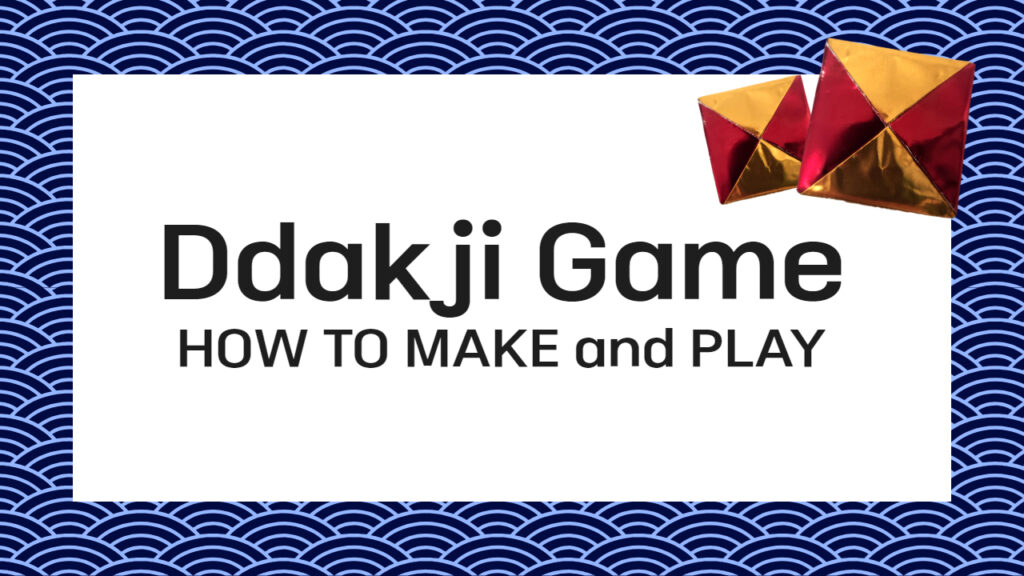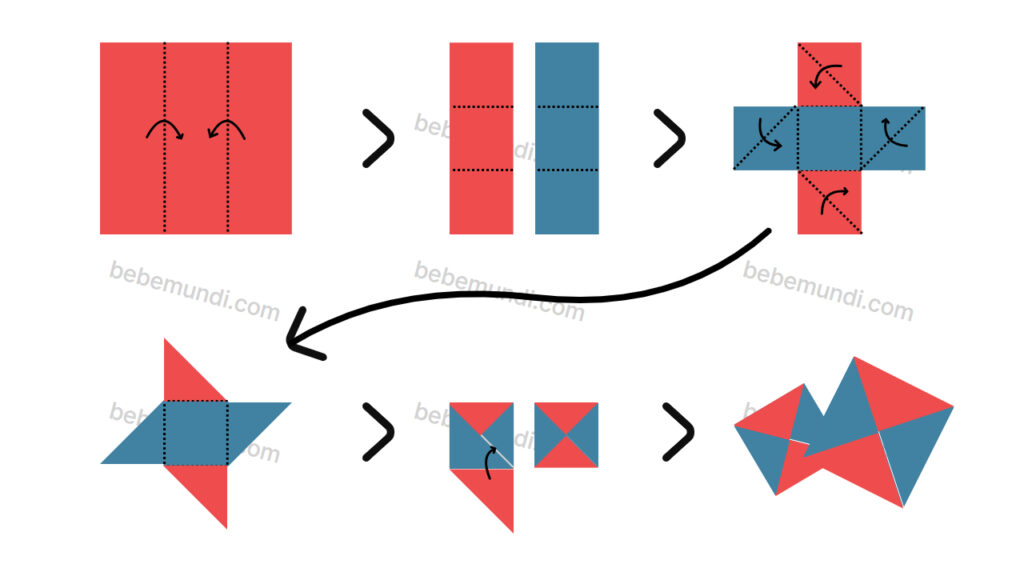
Ddakji game is a traditional Korean game played with folded paper pieces, officially known as Ttakjichigi in Korea. It involves flipping over an opponent’s ddakji by throwing one’s own ddakji onto it. This game is simple yet requires strategy and skill, making it enjoyable for people of all ages. Ddakji has been a beloved pastime in Korea for generations, and its popularity continues to this day.
Origin of Ddakji
The exact origin of ddakji is unclear, but it is believed to have existed since the Joseon Dynasty. However, it became widely popular during the modern era with the increased availability of paper. Records of ddakji first appeared in the Dong-a Ilbo newspaper in 1926, indicating that it was already a common children’s game by the 1920s.
How to Make Ddakji
Materials you need:
- Paper: Thick paper or multiple layers of thin paper can be used. In the past, book covers, calendars, feed sacks, and old cardboard were also used.
- Folding Tools: No specific tools are required for folding, but sandpaper may be needed to smooth out the folded edges if using thick materials.
How to Fold
There are several ways to make ddakji, but the most common folding method is as follows:

- Prepare Paper: Use two square sheets of paper. You can use origami paper or regular paper.
- Fold the Paper: Fold each paper into thirds to create three sections. You can fold it in an “S” shape to make three parts.
- Fold Corners: Fold one corner up and the other down.
- Repeat Steps: Repeat the process for the second paper.
- Combine Units: Stack the two folded units on top of each other.
- Fold Flaps: Fold the bottom unit’s flap upwards. Then, fold the top flap downwards and the bottom flap upwards.
- Finalize: Tuck any remaining flaps under to complete the ddakji.
This folded ddakji will hold its shape without any adhesive. Make several to enjoy the game!
How to Play Ddakji game
Ddakji can be played in various ways, with “flipping” being the most popular method. Here’s how to play using the flipping method in seven steps:
- Rock-Paper-Scissors: Players decide who goes first by playing rock-paper-scissors.
- Place Ddakji: The loser places their ddakji on the ground.
- Prepare Attack: The winner prepares their ddakji.
- Attack: The winner throws their ddakji onto the opponent’s ddakji to flip it over.
- Determine Winner: If the opponent’s ddakji is flipped, it belongs to the winner.
- Alternate Turns: Players take turns placing and attacking each other’s ddakji.
- End of Game: The game ends when one player collects all the ddakji, and that player wins.
Other Ways to Play Ddakji game
Ddakji is enjoyed in various ways. For example, the player who throws their ddakji the farthest wins, or the player who lands their ddakji closest to a drawn line wins. Another version involves throwing ddakji against a wall, with the player whose ddakji bounces back the farthest winning. These diverse methods, developed by children playing ddakji, require different strategies and skills.
Conclusion
Ddakji game offers several benefits beyond its traditional value. Firstly, it is low-cost, making it accessible to everyone. Secondly, despite its simple rules, it requires strategy and skill, enhancing problem-solving abilities. Thirdly, it promotes social interaction, strengthening bonds among friends. To modernize ddakji, you can create themed ddakji or play virtual versions on digital platforms. By doing so, ddakji can become an even more appealing and engaging game for new generations
With Korean traditional culture gaining popularity, explore the diverse world of Korean traditional games by clicking the link below. Discover the origins and methods of these games, and learn how they are adapting in modern society. Click the link to experience the allure of Korea’s traditional games.

